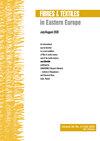SWOT Framework Based on Fuzzy Logic, AHP, and Fuzzy TOPSIS for Sustainable Retail Second-hand Clothing in Liberia
IF 0.9
4区 工程技术
Q3 MATERIALS SCIENCE, TEXTILES
引用次数: 0
Abstract
Abstract The fast-fashion business model is marred by high resource consumption and enormous emission of greenhouse gases. It is based on inaccurate forecasts, resulting in excess supply than demand. Globally, 85% of two-week-old garments end up as unfashionable or worn-out items that must be discarded as waste, disposed of for recycling, or donated to charities. With this colossal increase in textile waste, resource efficiency is one of the biggest challenges facing the fashion industry, which now calls for a swift implementation of a new sustainable business and consumption model to extend product life cycles. This demand for sustainable consumption encourages consumers to reuse, recycle and resell. The resell campaign known as second-hand clothing is a growing market worldwide. Current global forecasts predict a 185% increase over the next ten years, compared to FF, which will expand by just 20%. Africa is a top destination, with more than 80% of its population wearing SHCs. We contribute to this literature by assessing the significance of SHC trade in Liberia. We extend this assessment by developing a hybrid MCDM tool incorporating AHP, fuzzy logic, Ensemble, and TOPSIS to build a SWOT framework to identify criteria and sub-criteria for prioritizing SHC retailing in Liberia and Africa. Data for this study were gathered from a survey involving 100 SHC retailers from the Red-Light, Waterside, Duala, and Omega markets in Monrovia, Liberia. We identified several important factors in implementing sustainable SHC and recommended strategic directions towards their successful implementation.基于模糊逻辑、层次分析法和模糊TOPSIS的利比里亚二手服装可持续零售SWOT框架
摘要快速时尚的商业模式被高资源消耗和巨大的温室气体排放所破坏。这是基于不准确的预测,导致供不应求。在全球范围内,85%的两周前的服装最终成为过时或破旧的物品,必须作为废物丢弃、处理回收或捐赠给慈善机构。随着纺织品浪费的巨大增加,资源效率是时尚行业面临的最大挑战之一,时尚行业现在需要迅速实施新的可持续商业和消费模式,以延长产品生命周期。这种对可持续消费的需求鼓励消费者重复使用、回收和转售。被称为二手服装的转售活动在全球范围内是一个不断增长的市场。目前的全球预测预测,未来十年将增长185%,而FF仅增长20%。非洲是首选目的地,超过80%的人口佩戴SHCs。我们通过评估SHC贸易在利比里亚的重要性为这篇文献做出了贡献。我们通过开发一种混合MCDM工具来扩展这一评估,该工具结合了AHP、模糊逻辑、Ensemble和TOPSIS,以建立SWOT框架,确定利比里亚和非洲SHC零售业的优先标准和子标准。这项研究的数据是从一项调查中收集的,该调查涉及利比里亚蒙罗维亚红灯、Waterside、Duala和Omega市场的100家SHC零售商。我们确定了实施可持续SHC的几个重要因素,并建议了成功实施这些因素的战略方向。
本文章由计算机程序翻译,如有差异,请以英文原文为准。
求助全文
约1分钟内获得全文
求助全文
来源期刊

Fibres & Textiles in Eastern Europe
工程技术-材料科学:纺织
CiteScore
1.60
自引率
11.10%
发文量
12
审稿时长
13.5 months
期刊介绍:
FIBRES & TEXTILES in Eastern Europe is a peer reviewed bimonthly scientific journal devoted to current problems of fibre, textile and fibrous products’ science as well as general economic problems of textile industry worldwide. The content of the journal is available online as free open access.
FIBRES & TEXTILES in Eastern Europe constitutes a forum for the exchange of information and the establishment of mutual contact for cooperation between scientific centres, as well as between science and industry.
 求助内容:
求助内容: 应助结果提醒方式:
应助结果提醒方式:


